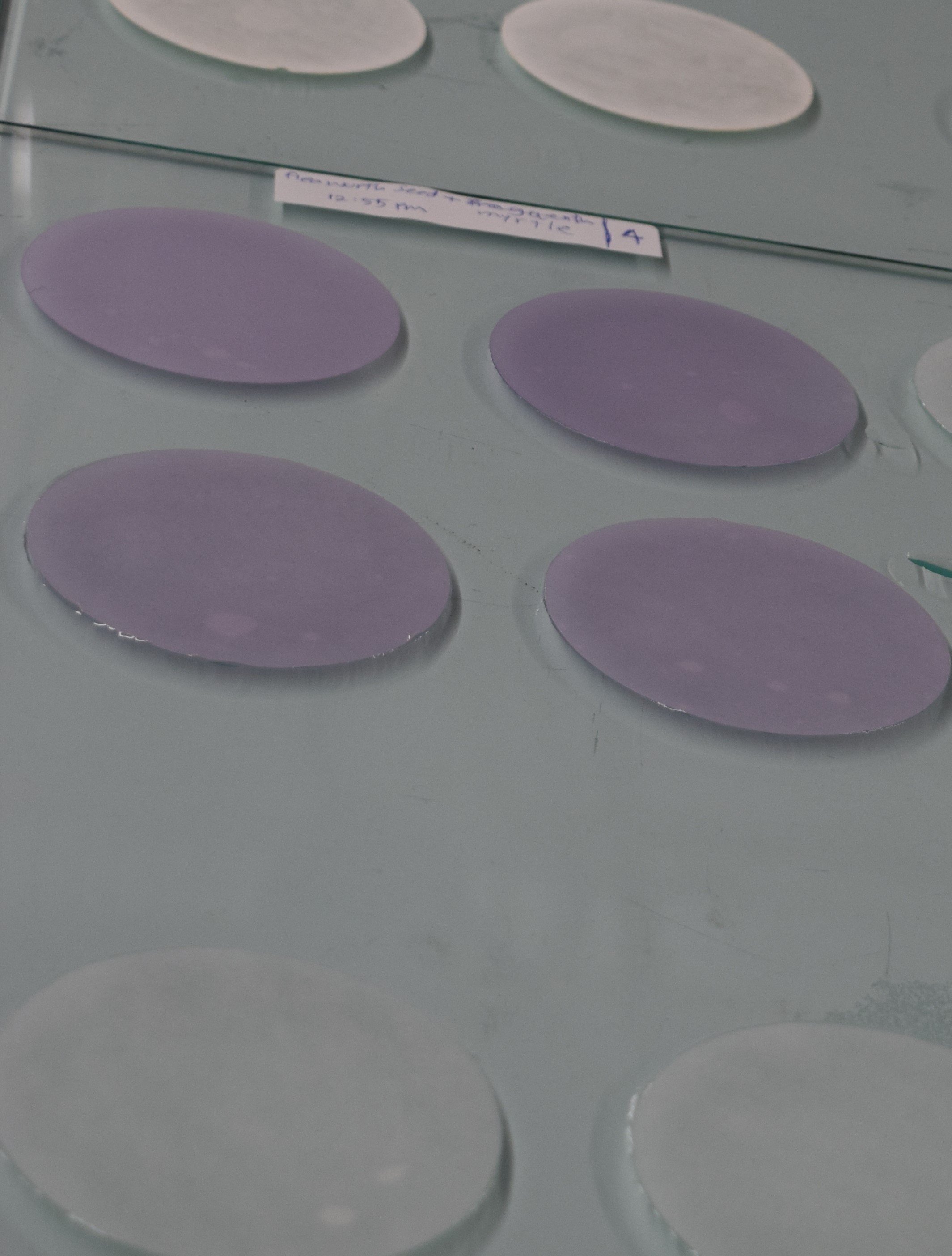MYRTLE SEEDS (TOḴM-E MORD)
Myrtle is Myrtus communis L., a species of aromatic medicinal flowering plant belonging to the Myrtaceae family, with dark blue berries. It is an evergreen shrub that comprises about 3,000 species, typical of coastal areas in the Mediterranean regions, such as North Africa or Southern Europe. However, it is also present in South America, Australia, and some areas of the Himalayas. Myrtle has a long history of application in the perfumery, cosmetic, food, and pharmaceutical industries, where different parts of it, particularly berries, leaves, flowers, and essential oils, have been extensively used as remedies for treating various diseases. The medicinal properties of myrtle were utilized as early as 600 B.C.E. and have attracted a lot of attention for a long time due to its antibacterial, antifungal, anti-inflammatory, antiviral, antiseptic, and disinfecting properties. For these reasons, it has traditionally been used as an antiseptic and disinfectant, as well as an antihypertensive agent, as described by Biruni (440 A.H./1048 A.D), Shahmardan (490-495 A.H./1097-1102 A.D.), Jamali-ye Yazdi (580 A.H./1184), and Serāj Shirāzi (857 A.H./1453 A.D.).
Recipes:
Teflisi (6th A.H./12th century has a recipe using myrtle mixed with other ingredients to create hair dye. The utilization of myrtle size is only indicated in Resaleh-ye Joharrieh by Simi and in Resāle dar Bayān-e Tariqe-ye Sāḵtan-e Morakkab va Kāḡaḏ-e Alvān (13th A.H./19th century. Both sources recommend adding myrtle extract. However, in another copy of Resāleh-ye Joharīyeh (837 AH/1433 A.D.), it specifies using myrtle seeds extract as sizing. Since the seeds do not produce mucilage, the reason myrtle was recommended might be for paper preservation due to its fungicidal property.
It seems the anonymous author of the second source obtained the recipe from Simi; however, some parts of the recipes are identical, some are misplaced, and some small sections are written differently. Simi's recipe clearly outlines various sizing materials, including myrtle extract, to create resistant papers that are thin, fluffy, smooth, and easy for the pen to move on. In contrast, the second source's recipe explains the same sizings, including the extract of myrtle seeds, to create turquoise blue paper that is smooth to write on. This discrepancy may be due to minor spelling errors, perhaps during the copying of the recipe, causing a significant change in the meaning of this small part of the text. Alternatively, it might be intentionally advised for turquoise blue colored paper due to the hue obtained from myrtle seed extract.
Simi’s recipe explains the process as follows:
و کاغذی که بسیار تنک و پرزناک بود و قلم کاتب را بوقت سرعت کتابت مانع باشد، تدبیر آن است که به آب خربزه شیرین یا به آب نبات مصری یا به آبِ مورد و یا لعاب اسپغول یا حلیم برنج بی روغن و به چند چیز دیگر که مجموع مقوی کاغذ است، کاغذ تنک را قوی توان ساخت و پرزها که بر وی باشد و قلم کاتب را مانع و دافع سرعت حرکت شود بصلاح آرد
The paper that is very thin and porous, hindering the reed pen's smooth movement during writing, can be remedied by sizing the paper with either sweet melon juice, Egyptian rock sugar, mucilage from myrtle seeds, mucilage from fleawort seeds, or oil-free rice paste, along with a few other strengthening agents. This process makes the thin paper robust, eliminates any roughness, and allows the calligrapher's pen to move smoothly across the paper as intended.
The second source explains the process as follows:
دیگر کاغذی که دارای رنگ پیروزه ناک باشد و مانع قلم باشد، تدبیر آن است که به آب خربزه شیرین یا به آب نبات مصری یا به آبِ مورد و با لعاب اسفیقول و لعاب برنج بی روغن [بگذارد که] مجموع مقوی کاعذ است، و چون کاغذ مهره زند مثلِ آینه نماید
The paper that has a dominant turquoise color and hinders the pen's smooth movement can be addressed by sizing it with sweet melon juice, Egyptian rock sugar, mucilage from myrtle seeds, mucilage from psyllium seeds, and oil-free cooked rice mucilage. The combination of these strengthening agents makes the paper resilient, and when burnished, it acquires a smooth surface, resembling a mirror.
Experiment:
Pour 100 ml of hot water into a glass jar with 10g of myrtle seeds in a ratio of 10:1. Cover and soak for an hour. Filter the solution to extract the myrtle seeds’ extract. Pour the extract into a tray or glass container. Dip the paper for an hour. Take out the paper and hang it to dry. After it is completely dried, burnish it with a burnishing tool to smooth the surface."
For the sizing, combining the mucilage of fleawort seeds and myrtle seeds, mix the two in equal parts in a tray or glass container. Dip the paper for an hour. Take out the paper and hang it to dry. After it is completely dried, burnish it with a burnishing tool to smoothen the surface.




